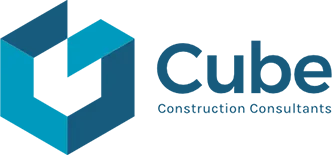How construction management software makes you more efficient
The construction industry is constantly evolving, and with it, the way that contractors manage projects. One of the most significant advancements in recent years has been the development of construction management software, for use by a cross-sector of contractors and designed specifically for the delivery of construction projects.
These cloud-based software platforms can streamline and simplify the many tasks involved in delivering a construction project, improving efficiencies, and reducing the likelihood of costly mistakes. In this article, we will explore the benefits of construction management software and provide guidance on current best practices for using it effectively.
Benefits of construction management software
The best construction management software offers significant advantages over the more traditional methods of managing construction projects. Some of the key benefits include:
-
Real-time access to project data: Unlike paper-based and spreadsheet-based systems that can become outdated quickly and difficult to access, construction management software provides a centralised platform for all project-related data. This helps keep all team members up-to-date with the latest information and ease of access to all relevant documents reduces the risk of errors and delays.
-
Improved communication and collaboration: Construction management software allows team members and stakeholders to communicate simultaneously, ensuring that everyone is always fully informed and can work together seamlessly.
-
Resource management: The software can help contractors manage resources such as materials, labour, and plant, ensuring that all aspects of your project are operating at peak efficiency, saving money, and delivering smoother project workflows.
-
Document management: Construction projects often involve a lot of paperwork. Construction management software can help you keep all your documents organised, easily accessible through a digital interface, and secure from unauthorised access.
-
Improved accountability: By managing tasks, milestones, programmes and procurement schedules through a centralised platform, it’s simple to ensure that everyone is held accountable for their work. This promotes a culture of responsibility, mutual collaboration, and ownership, ultimately leading to better project outcomes and reducing conflicts and misunderstandings.
Best practices for effective construction management software usage
To maximise the financial and resource management benefits of your construction management software, consider these best practices:
-
Choose the right software: With many options available, carefully assess your unique requirements and select the best construction management software to suit your needs. Our platform, Milestone, is user-friendly and flexible. It can be adapted and scaled to any project – please get in touch to find out more.
-
Invest in training: Ensure your team members have the necessary skills to use the software to effectively increase adoption, and reduce the risk of errors. Investing in adequate training for all stakeholders and users will help during implementation, improve operational efficiency, and increase the overall value of your software.
-
Develop a Standard Operating Procedure (SOP): To encourage consistency and accuracy across projects, create a standard operating procedure outlining how to use the software effectively and plan regular reviews and updates.
-
Encourage transparency: Promote a culture of openness and transparency by encouraging stakeholders to communicate through the platform’s channels, rather than independent emails, phone calls, WhatsApp etc. This keeps everything together, including documentation, a single point of access, and avoids anything important from being missed or lost.
-
Monitor KPIs: Define key performance indicators (KPIs) early in your project and use the software's reporting features to track their progress. This will allow you to quickly identify areas for improvement, bottlenecks, and potential delays and budget overruns.
-
Analyse historical data: Utilise the software's data storage capabilities to analyse trends and patterns to drive insights for productivity improvements for current and future projects, an effective best practice.
-
Visualise data: Harness the power of data visualisation and reporting tools to better understand your project's performance and share information with stakeholders.
Consultancy for construction – find out more
Our experienced team at Cube provide a variety of construction management consultancy services for contractors across the UK, including a unique construction management software platform, Milestone. To discover the benefits of working with us and how we can help, please speak to one of our team today.
Image Source: Pexels
